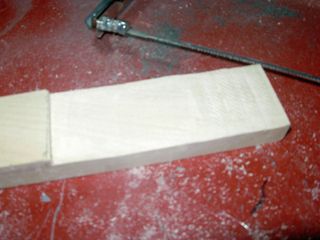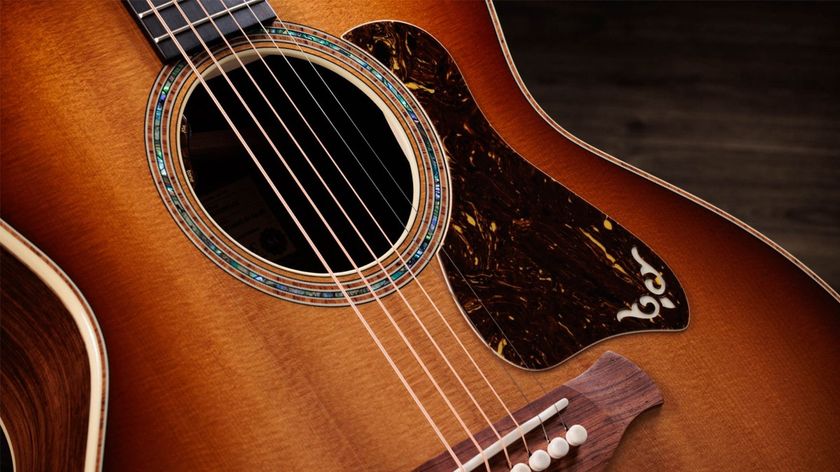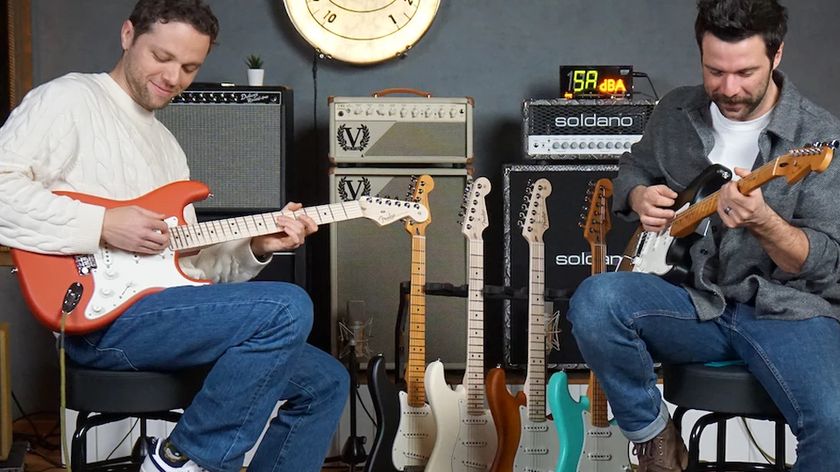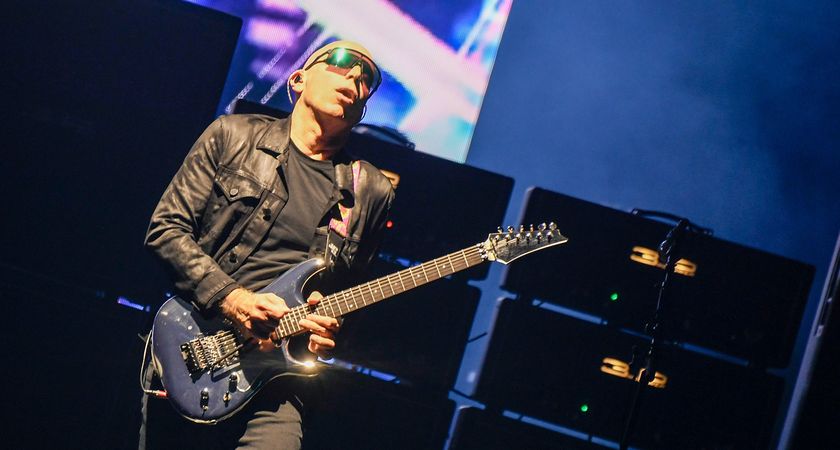Cigar Box: How to Build a Cigar Box Guitar for Around $25, Part 2

The air is crisp, sawdust and sparks are flying — it's time to build a guitar!
Hopefully you have been successful in your recon mission from last time.
This week, we are going to plan out and shape our headstock, shoulders and neck.
I am going to build two guitars for you. One will be the classic CBG (cigar box guitar); with the other one, we will show you some of the possible upgrades.
But first, let's take a look at that cigar box. Be sure to follow along with the 19 photos in the gallery below.
We are going to cut two slots in the sides of the box next to the lid. Grab your tape measure and pencil, find the center of the box and measure 3/4-inch off each side of the center line and from the top of the lid. This should be an outline for your neck. Now use your neck to connect the dots. Double check your measurements to make sure it is in the center of the box and repeat on the opposite side.
It's pretty easy so far. But now it's time for an important decision. If you are going to electrify your CBG and use a magnetic pickup, you are going to have to do an offset neck (for offset necks, please use the instructions on my website for shaping the neck: sanercigarboxguitars.com).
Get The Pick Newsletter
All the latest guitar news, interviews, lessons, reviews, deals and more, direct to your inbox!
We use piezo disk pickups in a lot of our guitars; they have a great lo-fi sound, and you don’t have to cut the box or do an offset neck. The down side to piezos is that you have to take some time to dial in your tone to avoid feedback. There's something new coming down the pike about this; a very special pickup is on the way, so you won't want to miss our next blog post.

Now it's time to break in that coping saw; cut just on the inside of the line you just made. Take your time; you want the neck to fit snug into the holes so it doesn't rattle around. Once you have made the cuts, use some sandpaper to sand the edges until you have a perfect fit. The neck should be flush with the top of the box. Place the neck in the box and leave about one and a half to two inches on the end for tail piece.
Mark where the neck meets the inside of the box and use your coping saw to cut out a slab so the lid shuts. Most lids are 1/8- to 1/4-inch thick. Take your time as you want to make sure you have a snug fit.

Back to shaping the neck. For a straight-through body and neck, I usually make it 32 inches in length. From the top of the neck, make a mark about 4 inches down; this will be your headstock. Use your coping saw to cut out a slab at 1/4-inch depth.
Finally, it's time to shape the back of the neck. On the back side of the neck, make a mark four and a half inches from the top (so we have room to make shoulders). Now make a mark about 2 inches up from where the neck meets the box. Use your rasp in between each of the marks to grind down the edges until you have a nice round shape on both sides. Use some sandpaper to smooth out some rough spots on the back of the neck and on your headstock.
Whew! Now we have a stick in a box. It's starting to look like a guitar already.
How about a little CBG/One Man Band music to listen to while doing some cutting and sanding? Check out Mike Snowden. I first came across Mike when looking for some CBG lessons on YouTube. We're going to feature some of his lessons in later blog posts.
Mike has a great sound, combining rock and blues to make his self-described “Hobo Rock." Prior to Mike's CBG fame, he was an accomplished bass guitarist playing in bands from coast to coast and opening for acts such as The Indigo Girls, Joe Cocker, Big Head Todd and the Monsters and Dave Matthews Band. Mike also is a CBG builder with more than 350 CBGs under his belt.
I’ve been listening to his Cigar Box Guitar Stomp album end to end while writing this, and he truly rocks the box! There is something to the dirty blues/rock and how he puts in a cool little lick at the end of a line that makes me want to learn how to play it and keeps me listing again and again. Check him out playing “Big City Man." He has a pretty cool guitar setup on this; it has one bass string and two guitar strings tuned to DAD. It just rocks!
Here is your recon mission till next time:
Tuning pegs (three each): I would recommend the individual ones and not the ones grouped together (like on classical guitars). Check out your local music shop, eBay and CB Gitty.
Some sort of sealer: Shellac, linseed oil (Careful: Linseed oil is highly flammable, and storing your used rags together can catch fire), polyurethane, etc., and brushes or rags to apply it. I use polyurethane. I just like the results, but others work well too.
If you want to bling up your box, look into some grommets or sound hole covers on CB Gitty. You will have to match up a drill bit or hole saw to fit your grommet or sound hole cover. The sound hole covers are not necessarily needed; we can put a few holes in the box using the 3/8 bit as mentioned before.
Some super glue: Check your local dollar store.
And we are going to use those tension pins mentioned in the last article too!
I owe a big thanks to Shane Speal, Hollowbelly and Mike Snowden for helping me show you the underground world of cigar box guitars.
Keep on playing!
Brian Saner owns Saner Cigar Box Guitars, which makes custom handmade guitars and amps using local dry-aged wood in every guitar. These guitars are handmade and might have imperfections, but that's what makes them unique. Once you hear the howl of a CBG, you might not want to play a Fender or Gibson again. Get one at sanercigarboxguitars.com and devildownrecords.com. Check out his Facebook page.




















“An investment-grade, pro-quality guitar that will provide decades of playing enjoyment before it becomes a treasured family heirloom”: Taylor Gold Label 814e SB review

“Satin Stratocaster dreams”: Fender and Thomann have produced two new exclusive Stratocaster lines – and their prices rival existing US and Mexico-made models









